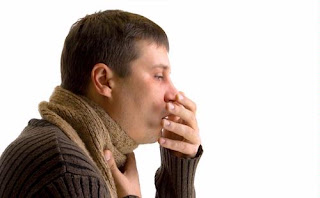Assessment Theoretically According Doengoes (2000)
1. Activity / Rest
Symptoms: Fatigue, malaise. Inability to perform daily activities because of difficulty breathing. Inability to sleep, needed to sleep with the high seating position. Dyspnea at rest or in response to activity or exercise.
Symptoms: Fatigue. Anxiety, insomnia. general weakness / loss of muscle mass.
2. Circulation
Symptoms: Swelling of the lower extremities.
Signs: Increased blood pressure, increase in heart rate / severe tachycardia, dysrhythmias, distended neck veins (severe disease). Dependent edema, was not associated with heart disease. Faint heart sounds (which is associated with an increase in AP diameter of the chest. The color of skin / mucous membrane: normal or gray / cyanosis; nail percussion and peripheral cyanosis. Pale can indicate anemia.
3. Ego Integrity
Symptoms: Increased risk factors, changes in lifestyle.
Symptoms: Anxiety, fear, sensitive to stimuli.
4. Food / fluid
Symptoms: Nausea / vomiting. Poor appetite / anorexia. Inability to eat due to respiratory distress. Permanent weight loss, weight gain showed edema (bronchitis)
Symptoms: Poor skin turgor. Dependent edema. Sweating. Weight loss, decreased muscle mass / subcutaneous fat. Abdominal palpitation can declare hepatomegaly (bronchitis).
5. Hygiene
Symptoms: Decreased ability / improvement needs help doing everyday activities
Signs: Bad hygiene, body odor.
6. Breathing
Symptoms: Shortness of breath (dyspnoea hidden onset).
Symptoms: Breathing is usually quick, expiratory phase extends with snoring, use a respirator muscles, breath sounds crackles, wheezing throughout areas of the lung in expiration and during inspiration continues to decrease or absence of breath sounds.
7. Security
Symptoms: history of an allergic reaction or sensitivity to a substance, presence or recurrence of infection.
8. Social Interaction
Symptoms: lack of support systems, the failure of the support of a spouse or significant others, long illness or an inability to improve.
Symptoms: Inability to maintain sound as respiratory distress, physical mobility limitations, negligence relationships with family members.
9. Learning / education
Symptoms: respiratory drug usage or abuse, difficulty stopping smoking, use of alcohol, failure to improve.
1. Activity / Rest
Symptoms: Fatigue, malaise. Inability to perform daily activities because of difficulty breathing. Inability to sleep, needed to sleep with the high seating position. Dyspnea at rest or in response to activity or exercise.
Symptoms: Fatigue. Anxiety, insomnia. general weakness / loss of muscle mass.
2. Circulation
Symptoms: Swelling of the lower extremities.
Signs: Increased blood pressure, increase in heart rate / severe tachycardia, dysrhythmias, distended neck veins (severe disease). Dependent edema, was not associated with heart disease. Faint heart sounds (which is associated with an increase in AP diameter of the chest. The color of skin / mucous membrane: normal or gray / cyanosis; nail percussion and peripheral cyanosis. Pale can indicate anemia.
3. Ego Integrity
Symptoms: Increased risk factors, changes in lifestyle.
Symptoms: Anxiety, fear, sensitive to stimuli.
4. Food / fluid
Symptoms: Nausea / vomiting. Poor appetite / anorexia. Inability to eat due to respiratory distress. Permanent weight loss, weight gain showed edema (bronchitis)
Symptoms: Poor skin turgor. Dependent edema. Sweating. Weight loss, decreased muscle mass / subcutaneous fat. Abdominal palpitation can declare hepatomegaly (bronchitis).
5. Hygiene
Symptoms: Decreased ability / improvement needs help doing everyday activities
Signs: Bad hygiene, body odor.
6. Breathing
Symptoms: Shortness of breath (dyspnoea hidden onset).
Symptoms: Breathing is usually quick, expiratory phase extends with snoring, use a respirator muscles, breath sounds crackles, wheezing throughout areas of the lung in expiration and during inspiration continues to decrease or absence of breath sounds.
7. Security
Symptoms: history of an allergic reaction or sensitivity to a substance, presence or recurrence of infection.
8. Social Interaction
Symptoms: lack of support systems, the failure of the support of a spouse or significant others, long illness or an inability to improve.
Symptoms: Inability to maintain sound as respiratory distress, physical mobility limitations, negligence relationships with family members.
9. Learning / education
Symptoms: respiratory drug usage or abuse, difficulty stopping smoking, use of alcohol, failure to improve.

